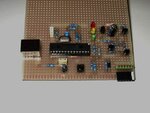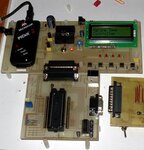cubanflyer
Full Member level 5
Hi
I am looking at getting an Easypic 6 to replace my current development system. I like the idea of actual being able to use the target pic on the board.
I have a project that may benifit from touch screen technology and it has that fuction available as an extra.
Does anyone have any views or comments on this unit?
I am looking at getting an Easypic 6 to replace my current development system. I like the idea of actual being able to use the target pic on the board.
I have a project that may benifit from touch screen technology and it has that fuction available as an extra.
Does anyone have any views or comments on this unit?

